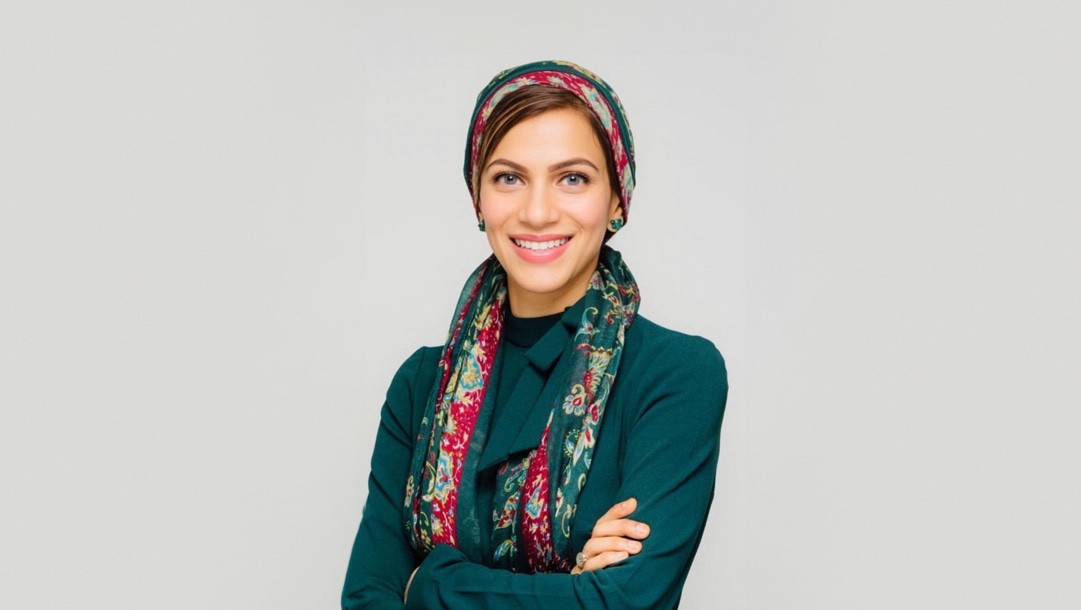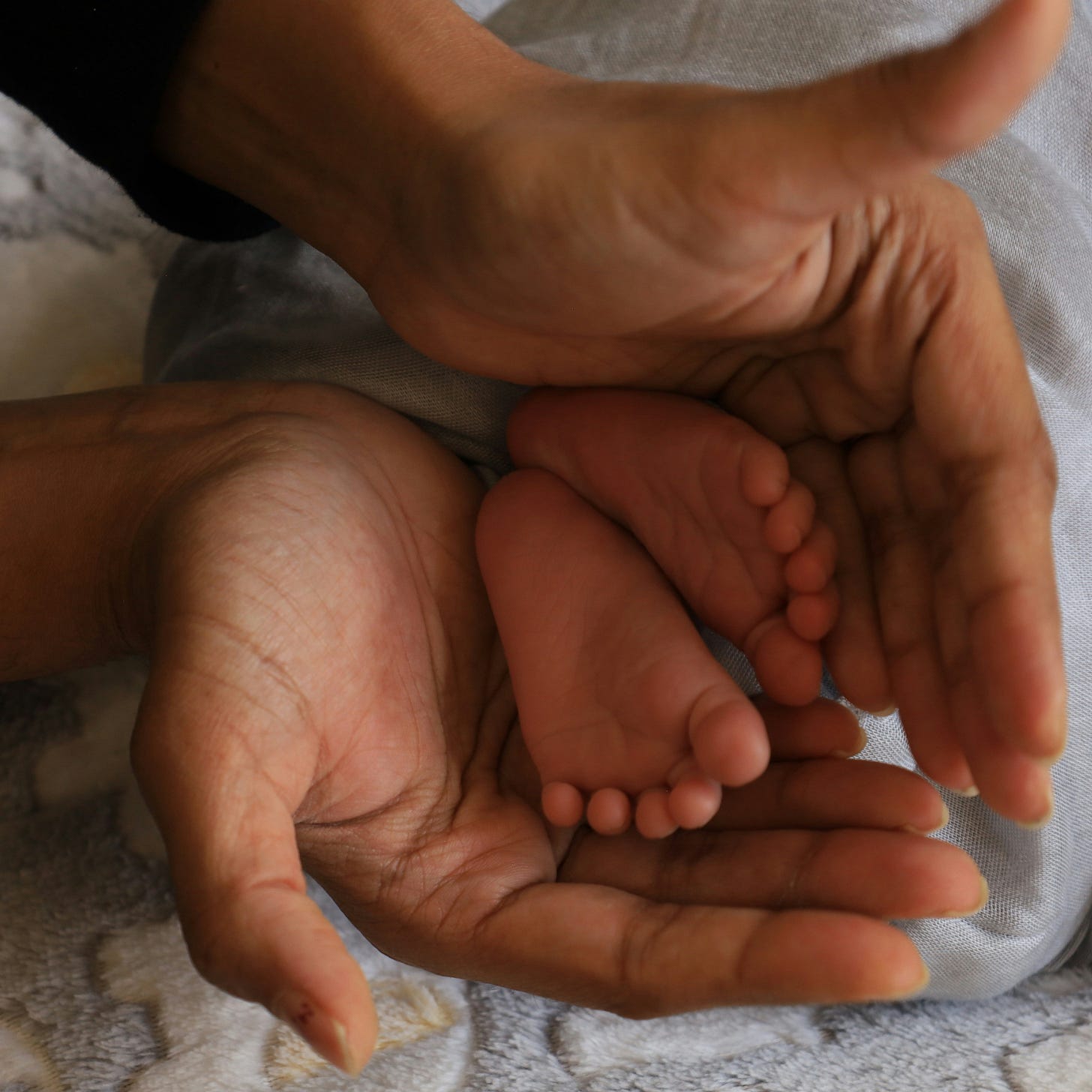From Cradle to Cradle: Making healthcare more human through intentional design, genetic personalization, and empathetic technology.
Jul 2025 | Edition 002 | In Conversation with: Dr. Maliha Hashmi

The Architect Of a More Human Future For Healthcare
Dr. Maliha Hashmi is at the center of some of the most important issues in healthcare: where new technology meets human vulnerability, where scientific progress meets global inequality, and where institutional resistance meets the need for urgent modernization.
A Harvard and MIT graduate, Dr. Hashmi isn’t just navigating these tensions; she’s strategically positioning herself to resolve them through a career that defies conventional boundaries. While many healthcare innovators excel in either vision or execution, Maliha has mastered both: developing future-focused frameworks while implementing transformative systems that serve millions today and millions more tomorrow.
Recently named first among the Top 10 Female Innovators and Leaders Globally by Entrepreneur Mirror, Dr. Hashmi's approach represents a fundamental rethinking of how healthcare functions. As a senior advisor and change agent leading major initiatives in the health, wellness, and biotech sectors, she advocates loudly for a new framework she calls "cradle to cradle"a revolutionary perspective that goes beyond treating illness to enhancing human potential at every stage of life.
Her work on COVID-19 task forces taught her how crises can spur innovation and influence governmental policy. She ranks among the top seven most talented female health leaders in the MENA region, where her implementations have translated abstract potential into measured outcomes.
Beyond her numerous accolades, from the Forbes Health Leadership Award to recognition in Who's Who in America, what distinguishes Dr. Hashmi is how she’s advocating for the ordinary man and woman in system-wide transformations.
Along the way, she's come up with her own unique ways to deal with institutional resistance, use new technologies without losing touch with people, and provide personalized care to a wide spectrum of society.
Dr. Hashmi is a new kind of leader who combines technology with healthcare systems that are facing problems never seen before in history. Her toolkit combines systemic understanding and scientific rigor with profound empathy and pragmatic application.
Her mandate is clear and ambitious: healthcare for all, everywhere. Her methods for achieving it provide a masterclass in architectural thinking applied to our most basic human need - health.
Healthcare For Everyone, Everywhere:
Dr. Maliha Hashmi's Vision for The Future of Health
During our conversation with Dr. Maliha Hashmi for our Architects of Change series, one phrase came up repeatedly as she described her vision for the future of health: "healthcare for everyone, everywhere." Behind this seemingly simple mantra is a far-reaching reimagining of what healthcare could be, not just more accessible, but fundamentally transformed.
The Pandemic as Catalyst
For Dr. Hashmi, the COVID-19 pandemic represented a watershed moment that validated years of work in healthcare technology integration.
"COVID hit, and that was my most cathartic moment," she explains. "We thought there was a certain population that would never adapt to technology. And then we realized that technology had the power to connect everyone."
What surprised her most was seeing populations previously considered resistant to technological adoption, particularly older adults, embrace digital solutions out of necessity.
She recalls, "Stadiums were used as makeshift clinics by doctors to check on patients. They repurposed convention centers. There was no space. We thought the aging population would never adapt to technology, but when they couldn’t get seen in clinics and hospitals, they realized that telemedicine was their only option."
This widespread use of telehealth was more than just a temporary crisis response; it revealed something deeper about healthcare's evolution.
"If these steps can create accessibility to just the person next door, maybe this process can create accessibility to developing nations," she realized. "Maybe this approach can create further accessibility in terms of health equity."
From Cradle to Cradle: A New Healthcare Paradigm
At the heart of Dr. Hashmi's vision is what she refers to as a "cradle to cradle" approach to health, a concept that fundamentally shifts our perspective on health outcomes.
"The journey I discuss is from birth to death," she clarifies. "It's having that quality of life and that enhanced living experience where we're healthy not just because of our age factor or living longer but every stage of life has been enhanced in some way or form."
This perspective shifts the focus from simply extending lifespan to optimizing health quality at every life stage:
"Through the element of even pre-pregnancy, when couples get from there to getting pregnant, to having a child, to having a child grow up... it's an ongoing cycle," she elaborates. "It's a lifelong journey." It doesn't end with death. It continues because what you've left behind will be the next step."
Dr. Hashmi's intergenerational view transforms how we need to measure success in healthcare, moving beyond individual lifespans to cumulative enhancements across generations.
Intentional Living as a Framework
Throughout our conversation, Dr. Hashmi repeatedly returned to the concept of "intentional living" as both a personal philosophy and a design principle for healthcare systems.
"Intentional living is one of the most beautiful concepts in my life because everything becomes obvious when it's done with that intention," she explains. "Intentional living is knowing what you need to do when you have anxiety. Intentional living is knowing what to do when you are gaining those pounds."
She cites Saudi Arabia's Vision 2030 as an example of this seemingly simple principle applied on a national scale:
"The fact that they're creating these giant parks and outdoor gyms that are used for everyone... it's that informed sort of way of living where you know exactly what you need to do," she notes. "For the past five years, you'll see Saudis that are in much better shape and health than you have ever seen them before."
This transformation demonstrates how intentional design can reshape population health through environmental and cultural interventions.
Genetics and Personalized Prevention
Dr. Hashmi brings particular precision to discussions of genetic information and its potential to transform preventive healthcare:
"I think one element that will be critical is knowing more about your genes," she states. "When you have more access to your genetic and phenotypic data, it's very personalized, and that metric becomes very different than the general one."
She illustrates her point with a concrete example:
"There are two people who can't both be on the keto diet. Even though they’re both between 30 and 35 years old, one person's oxidative stress levels in their cellular makeup are very different from the other's. So one might be well-suited for a keto diet. The other may be about to have a heart attack.”
This change represents a fundamental shift from standardized health recommendations to truly personalized approaches.
"If I know someone has a certain type of gene, then I know they're prone to x, y, and z, so I know how not to trigger them," she explains, describing how genetic knowledge enables more precise preventive strategies.
The "10% Problem, 90% Solution" Methodology
Dr. Hashmi's approach to healthcare transformation reveals a distinctive yet deceptively simple methodology that emphasizes solutions over problem analysis:
"I have a mantra... 10% problem, 90% solution," she explains. "90% is about knowing that there are problems in the system and how to create momentum to solve them."
This ratio reflects her belief that excessive focus on problems can paralyze action:
"If we want to solve big problems in the world, we need to become much more of a solution-oriented world than a problem-stricken world," she notes. "And that's how I see healthcare. There are problems, but 90% or more are easily solvable.
Technology as Humanizing Force
While many view technology as potentially dehumanizing healthcare, Dr. Hashmi frames it differently:
"I've always been an enthusiast of humanizing technology," she states. "The patient and person or the physician experience or the person-to-person experience is improved through it.
She offers a practical example:
"Even if you see having two more minutes with your patient, from a physician, because everything else has been seamless, makes all the difference," she explains, highlighting how technology can enhance rather than replace human connection.
When discussing AI's impact on physicians, she provides a nuanced perspective:
"We're not going to be replacing them per se, but we'll be replacing them with those who have learned, understand, support, or promote AI," she suggests. "The typical physician might need to let go or unlearn their insecurities or worries about AI. But the one who's going to learn how to handle it will be the physician of the future."
Mental Health: The Overlooked Dimension
Dr. Hashmi brings particular attention to mental health as an often-neglected component of healthcare transformation:
"People forget about mental health," she observes. "Mental health is such a giant part of how we can enhance mental health through technology."
She points to the scale of need:
"One in three individuals is anxious. That's huge," she notes. "Imagine if one in three is anxious, but they know how to counter it or improve it. Think of how much that would strengthen their relationships, their children, and the world."
This theory connects individual psychological well-being to broader social outcomes:
"Generally speaking, having fewer angry people leads to less horrific outcomes," she explains, drawing a direct connection between mental health and community well-being.
Building Resilience for Change
Dr. Hashmi acknowledges the inevitable challenges in healthcare transformation:
"Resistance is something that has created that resilience," she reflects. "It's been there since I was a kid, since I was always working with systems where I had to prove myself."
She describes how she navigates setbacks:
"I'm human. There were times when I just sat down and cried, and other times when the next day I got up thinking, 'I have to do it,'" she shares. "Sometimes it didn't happen as quickly as a week. Occasionally it took me a year to recover from something."
This balanced approach to innovation, neither naive optimism nor cynical pessimism, has enabled her to sustain momentum through significant challenges.
The Power of Moonshot Thinking
When discussing ambitious projects like NEOM back in Saudi Arabia, Dr. Hashmi emphasizes the value of aspirational goals in healthcare:
"Every organization should have some sort of bold moonshot idea to live by because it enhances the smaller projects that are happening around," she argues. "And if we don't have bold or moonshot ideas, then we're missing out on the outcomes."
She redefines success in terms of directional progress rather than complete implementation:
"If I'm able to do even a fraction of my bold idea, I've succeeded," she explains. "Because that bold idea has a forceful purpose."
Health Equity as Core Mission
Throughout our conversation, Dr. Hashmi's commitment to expanding healthcare access remained a consistent theme.
"If you have accessibility to improve any component of it, especially the ones that don't have access to it, you'll improve not just that generation, not just that specific group or cohort, but it improves society in that making," she explains.
She recounts work with hospitals serving underserved communities in America’s Midwest:
"I've been working with hospital systems in Chicago and other places, like in Flint, that were actually closing down," she recalls. "Being on teams that kept those hospitals running for African Americans and other minorities was so engaging and empowering because they wouldn't have had access to healthcare at that time."
Her answer sparked a more profound question: how has designing healthcare systems for underserved people shaped her as a healthcare professional?
The way Dr. Hashmi answered shows a big shift in the normal power structure in healthcare, one that quietly undermines the whole idea of "service to the underserved."
What surfaced wasn’t a conventional tale of altruism, where privileged prodigies sacrifice their comfort to aid the impoverished. Instead, her ideas blur the boundaries between the healer and the healed, proposing a much more radical notion: that improving the care of underserved groups also improves the healthcare system overall.
Consider Dr. Hashmi's personal admission: "I was trying to look up whether I had a condition," she said, laughing. "Because people thought my love for other people was a bit weird." This self-reflection demonstrates how thoroughly modern healthcare has pathologized deep empathy, viewing emotional connection as a professional liability rather than an evolutionary advantage. When Dr. Hashmi wonders if her desire for human connection is "some sort of condition," she unintentionally diagnoses healthcare's illness.
Her work in struggling hospitals in Chicago and Flint reveals another counterintuitive truth: these facilities were not simply being "saved" to help underserved communities; rather, these communities were saving the institutions by imposing innovations that ossified healthcare structures desperately needed but could not generate internally. The hospitals in need of her help were failing not because they served marginalized populations, but because healthcare systems designed for privilege lack the adaptive resilience that emerges when confronted with genuine human diversity.
This is one of the most subversive things she does: she frames the work as an exchange rather than a sacrifice: "It is not a selfless endeavor." It’s a very rewarding, healthy endeavor in which both parties benefit." This dismantles the martyr complex endemic to many healthcare narratives, suggesting instead that serving underserved populations is less charitable donation and more metabolic necessity.
Her use of ikigai, the Japanese concept of "reason for being," implies that working with underserved groups is not merely an adjunct to healthcare's purpose, but rather a fundamental aspect of it. Without this work, healthcare merely consists of technical tasks disconnected from its underlying purpose.
Most provocatively, her statement that "if we touch one life and that one life could have done something horrible because they were in a very detrimental state, we have prevented something bad from happening" calls us to rethink prevention entirely. It suggests that healthcare for marginalized communities isn't merely preventing individual disease but preventing social fracture, that medical intervention is simultaneously sociopolitical intervention, with ripple effects far beyond clinical outcomes.
What Dr. Hashmi's response ultimately suggests is that designing healthcare for the underserved doesn't just improve access for marginalized populations, it rehabilitates healthcare itself from its own institutional pathologies of detachment, rigidity, and fragmentation. The margins, in her paradigm, aren't the periphery of healthcare's concern but the crucible of its renewal.
As our conversation with Dr. Hashmi concludes, what emerges is a vision of healthcare that transcends traditional boundaries, between prevention and treatment, technology and humanity, and individual well-being and social health.
Her "cradle to cradle" framework reimagines healthcare not as a system for fighting disease but as an enabler of human flourishing across generations. Her concept of "intentional living" provides both a philosophical foundation and a practical implementation strategy. Her approach to technology as an enhancer rather than a replacer of human connection charts a course beyond the false choices that have stalled progress.
In a field often dominated by incremental improvements, Dr. Maliha Hashmi represents a truly transformative voice, one that inspires us to imagine healthcare not merely as the absence of illness but as the presence of vitality at every life stage.
As she puts it with characteristic clarity,
"People are getting better not just at living longer, but at living better lives."
And that, ultimately, is the essence of one very human champion of today’s healthspan revolution.
This interview is the second in a series of conversations by the Group Of Humans we’re calling: “Architects of Change: Healthspan Edition”, exploring innovators who are fundamentally rethinking health and wellness, shifting the paradigm from merely treating sickness to actively fostering vitality and extending “healthspan” - the period of life spent in top health.
Thanks for reading Group Of Humans, Architects of Change: Healthspan Edition. Subscribe for free to receive new posts and support our work.






It was a rare privilege to join my learned friend Sean Carney in conversation with Dr. Maliha Hashmi.
Her Cradle to Cradle vision for the future of healthcare was a breath of fresh thinking in an industry urgently in need of new ideas that serve ordinary people better.
More than that, though, Dr. Hashmi's ideas feel authentically personal, which is all too rare to find in innovation circles these days.
There's so much to unpack from our conversation with her—you'll probably want to read it, leave it and come back to it again and again.